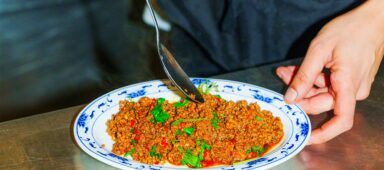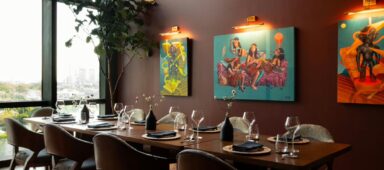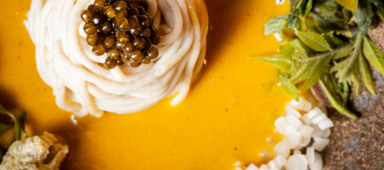A trip to Penang isn’t complete without indulging in its best dishes. Here’s where to go for your fix of its diverse must-haves
In partnership with Penang Tourism
One of the region’s top culinary destinations, Penang and its food are shaped by a multicultural society. But it’s not Michelin stars or exotic cooking techniques that colour the plates on this bustling island. Instead, Penang’s best eats are scattered along its many alleyways and streets. Pepper your foodie road trip with some of Penang’s signature dishes at these top places.
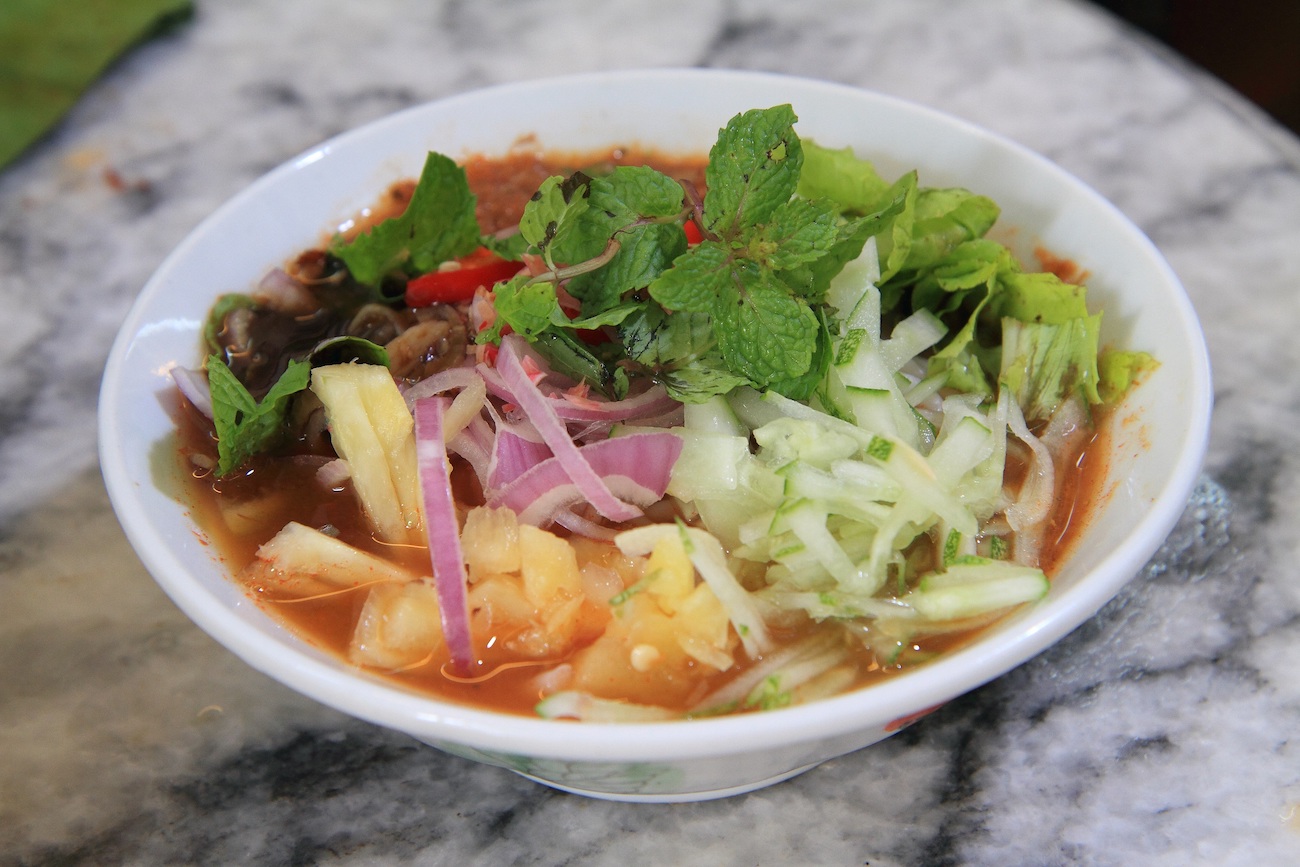
Assam Laksa
Each Malaysian state has its own take on this tangy, seafood-based noodle soup, but many will tell you that Penang assam laksa is undoubtedly one of the best. The broth is made with mackerel fish, a handful of tamarind for its sour flavour profile and distinct ingredients such as mint and pineapple slices. The secret ingredient in Penang assam laksa is the hae ko (fermented prawn molasses), which is added in just before serving to bind all the flavours together. Dig into some at Penang Road Famous Teochew Chendul. While many head to this chain for the chendol, the assam laksa here is also top-notch. Crowds also flock to Laksa Janggus in Balik Pulau, and there is often a long queue here.
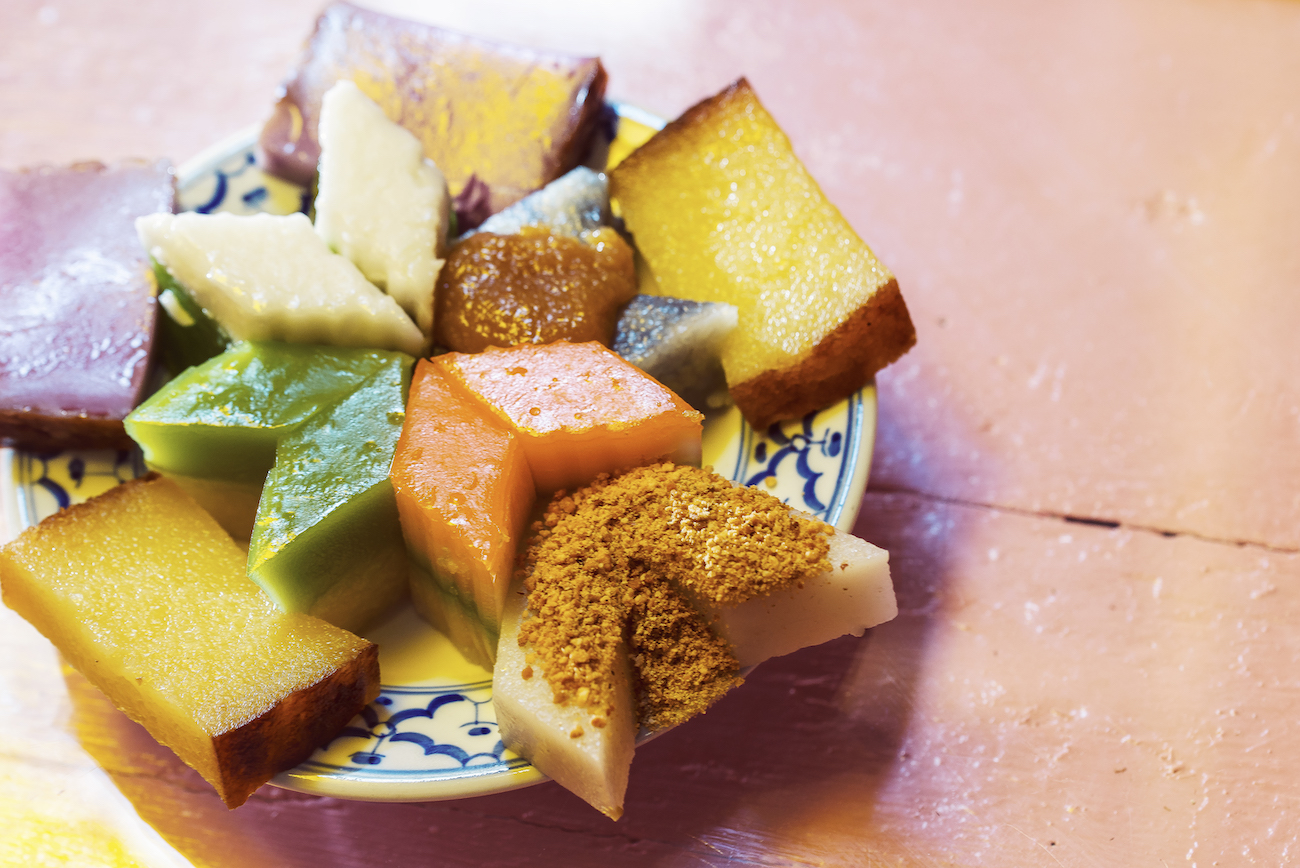
Nyonya kuih
Want a few nibbles to tide you over until lunch? Pick up sweet and savoury Nyonya kueh for a sweet start to your day. These bite-sized appetizers are often filled with coconut or palm sugar before being baked or steamed, traditionally over a charcoal fire. Enjoy them in proper Peranakan style at the highly Instagrammable café Nyonya Palazzo, located within the Pinang Peranakan Museum and featuring on-loan décor items, crockery and other antiques. Alongside delicately crafted sweets such as kuih bengka (tapioca cake) and red-skinned miku with kaya butter, the café also serves savoury Nyonya classics such as roti jala with chicken curry. Perfect for an indulgent high tea.
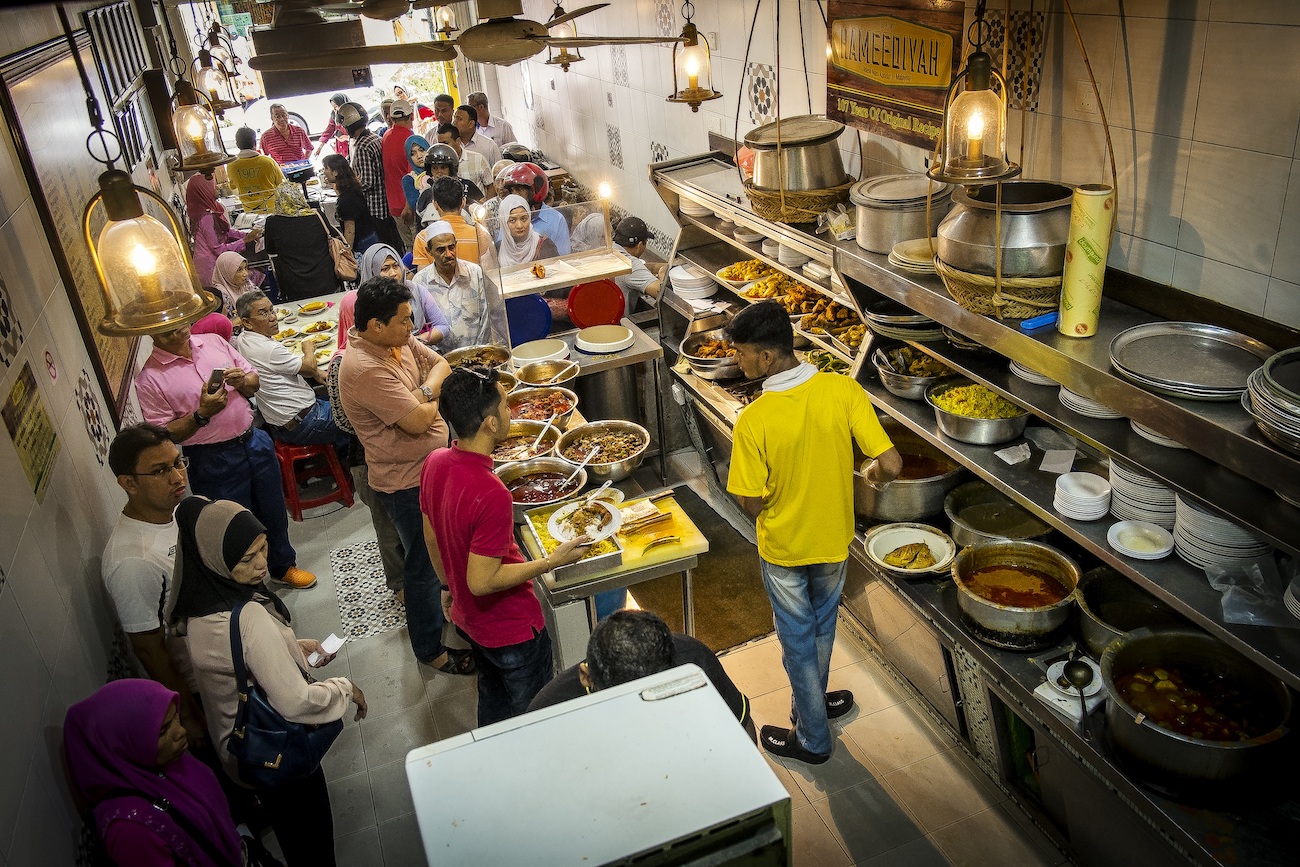
Nasi kandar
Brought to life by Tamil Muslim traders from India, nasi kandar originated in Penang. Bring an appetite because the generous portions of rice are meant to be paired with at least two dishes or more. Long queues are always a good indicator of food quality, and Nasi Kandar Beratur (aka Liyaqat Ali Nasi Kandar) near Kapitan Keling Mosque never disappoints. This popular stall only opens after 10pm, making it a supper hotspot with both tourists and locals. If you’d rather enjoy this calorie-dense meal in the daytime, then go to Hameediyah Restaurant on Campbell Street, one of the island’s oldest and most authentic spots for nasi kandar.
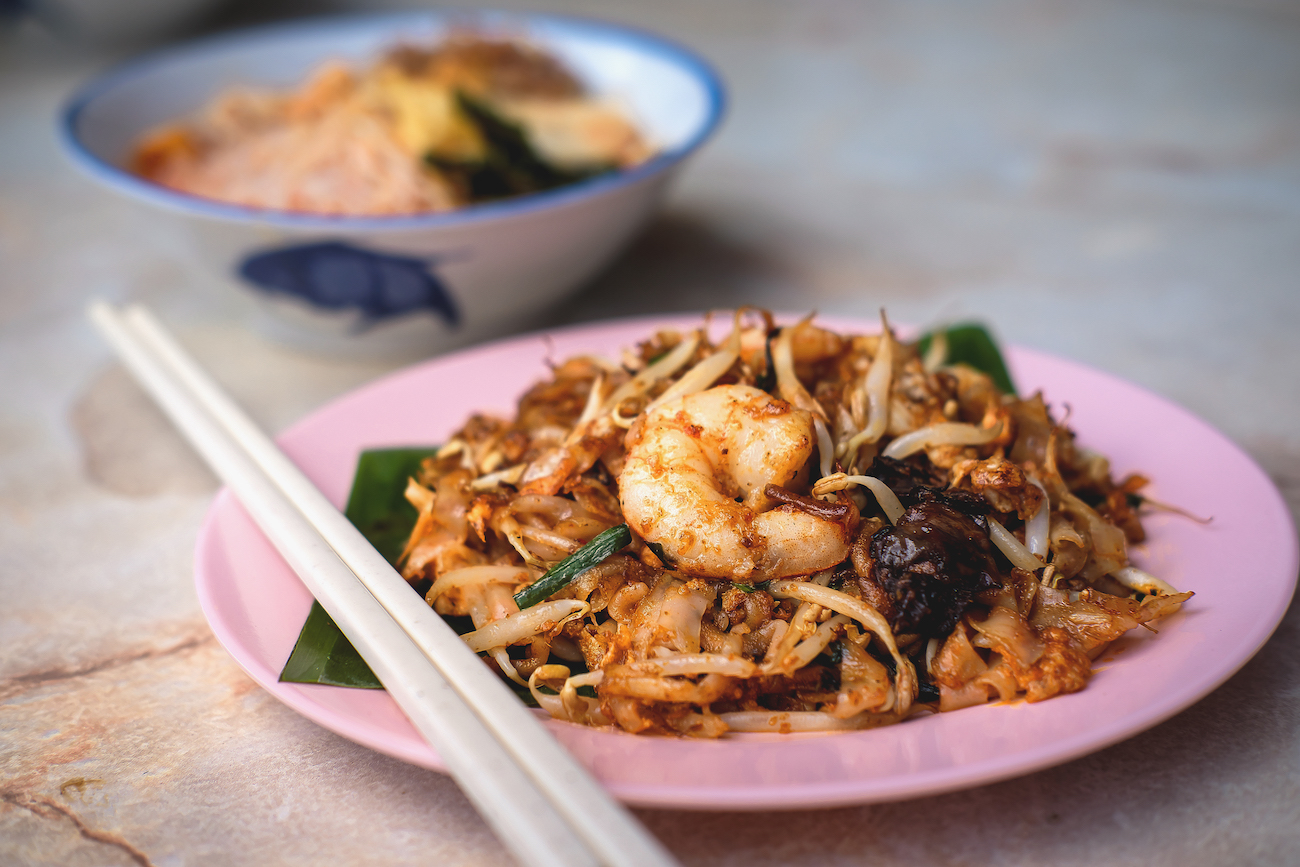
Char koay teow
A Chinese-inspired dish with Teochew roots, char koay teow has a signature wok hei and smoky aftertaste – hawkers often use blazing high fires to cook it – that sets it apart from other fried noodle dishes. Char koay teow is also known for its pork lard, but at Bee Hwa Café on Dickens Street in George Town, heaping platefuls of the dish are served entirely pork-free. That doesn’t mean it’s lacking in flavour, because the noodles are loaded with crabsticks, prawns, fish balls, bean sprouts and a satisfying fried egg. Want something entirely halal? Sany in Bayan Baru does a version that’s drenched in their secret sauce and topped with big prawns.

Pasembur
Sometimes referred to as Indian rojak, pasembur is a must-try when you’re in Penang. Equal parts crunchy and savoury, this mouth-watering salad of julienned vegetables, tofu, egg, shrimp fritters and other goodies comes together thanks to a delicious sauce made with spices and sweet potato. You’ll often find it on the menu at mamak shops, alongside other classics such as mee goreng mamak. You can’t go wrong with Kareem Pasembur Rojak on Union Street, and its dazzling display of fritters and other ingredients. Bonus: it’s been around since 1945, so you’re tasting a plateful of Penang history.
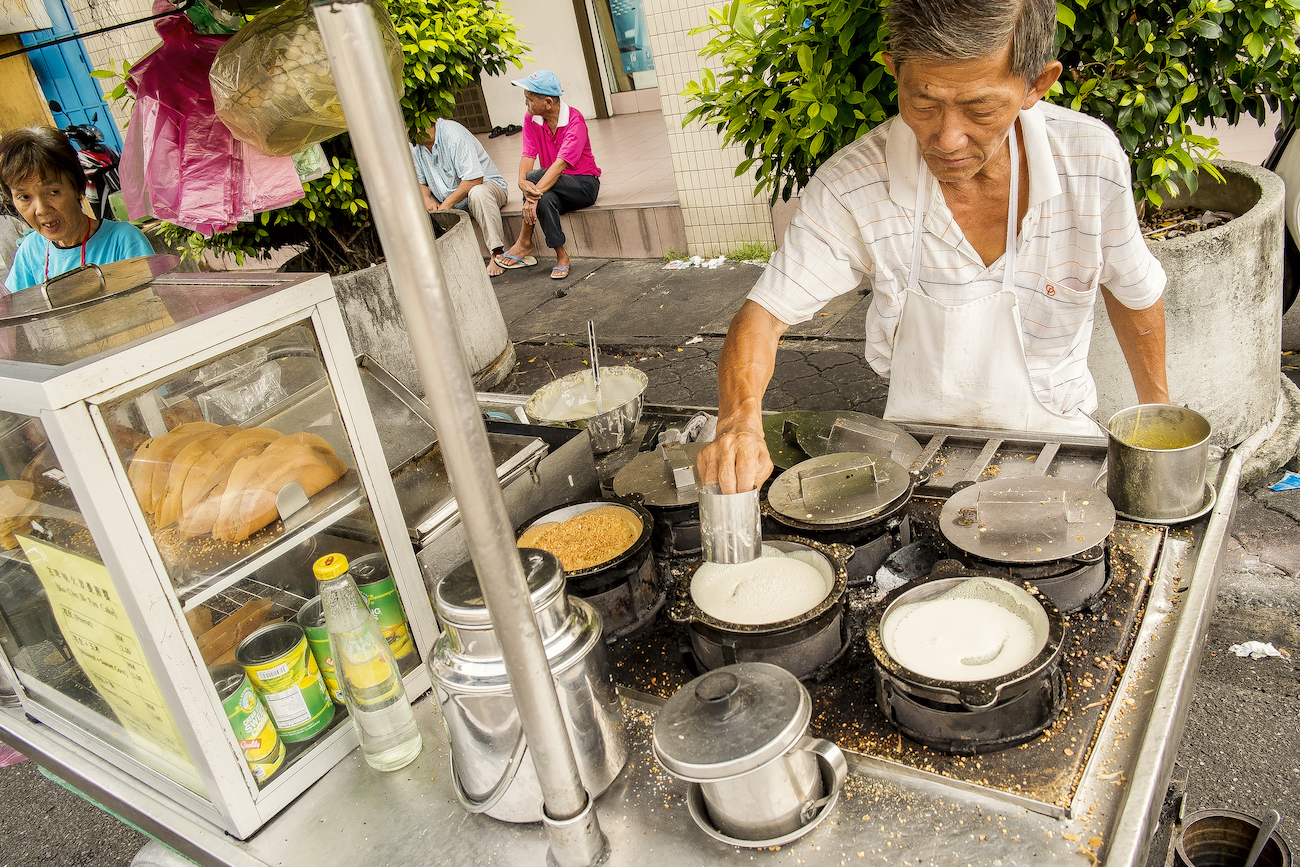
Apom
Whether sweet or savoury, apom is also a beloved treat on the streets of Penang. A bowl-shaped crêpe made with fermented rice batter, apoms can be simple or extremely indulgent, depending on the filling, ranging from a simple fried egg to bananas and sweet corn and even Nutella! You’ll definitely find the latter filling at Apom Balik Station at Batu Ferringhi, along with other unusual toppings such as Oreo cookies and jams. For a more classic, paper-thin preparation, visit Swee Kong Apom Manis at Pulau Tikus, where they’ve been making them with eggs and coconut milk since 1920.
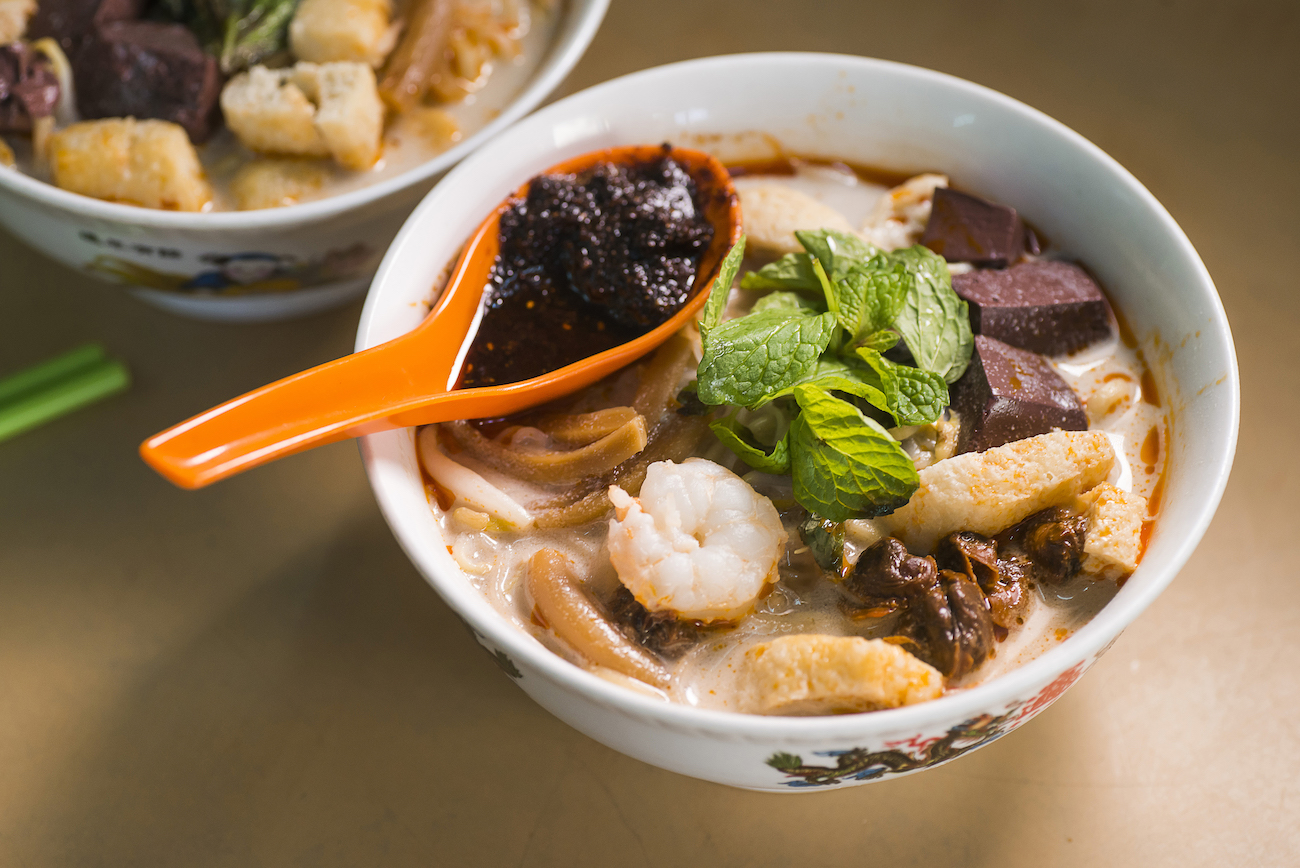
Curry mee
Though they may look similar at first glance, curry mee and Penang laksa are far from the same thing. The former is made with yellow egg noodles, a light, shrimp-based yellow curry broth, enriched with a dash of coconut milk, and packed with shrimp, bloody cockles and – for the bold-hearted – blood cubes. Foodies swear by the stall at Chulia Street, where a rich broth is accompanied by a game-changing chilli paste. And if you’re partial to richer broths, you should pay a visit to Tua Pui Curry Mee on Kimberley Street, where they have the option of a dry version, as well as toppings such as chicken and squid.

Mee goreng mamak
A comforting, flavour-packed meal no matter the time of day, this mamak shop staple is hard to beat. Mee goreng mamak is a true cultural medley, combining yellow noodles and Southeast Asian favourites such as prawn, fishcake and kicap manis with Indian-Muslim curry flavours, red onions, eggs and even potatoes. The best version in Penang is hotly contested, but you’d be remiss if you didn’t try the one at streetside stall Rahim Mee Goreng on Jalan Air Hitam, at the start of your trek up to Penang Hill – it even comes served on a banana leaf. Or you could go for Mee Goreng Bangkok Lane, the beloved stall said to pre-date Malaysian independence. It has recently moved to more comfortable surrounds on Jalan Burma in New World Park.
For more information on exciting places to experience in the state of Penang, please visit Penang Tourism



